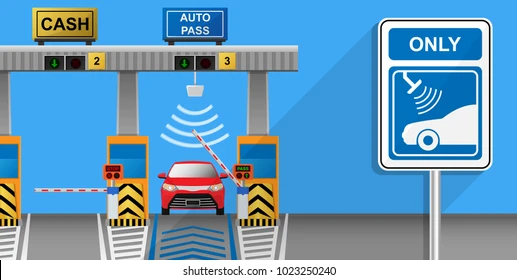
Zooming Past Toll Booths: The Simple Magic of Electronic Toll Collection (ETC)
Introduction:
We’ve all been there – inching slowly towards a toll booth, digging through pockets for change, and hoping the line moves a bit faster. But what if there was a way to breeze through tolls without stopping? Enter Electronic Toll Collection (ETC) – a smart solution that’s changing the way we pay for the roads we travel.
1. What is ETC?
Imagine driving through a toll booth without hitting the brakes. That’s the beauty of Electronic Toll Collection. ETC is like having a magic pass for the road – it lets you pay without stopping, making your journey smoother and more convenient.
2. The ETC Tag: Your Road Passport
At the heart of ETC is a small, smart device called an ETC tag. It’s like a tiny superhero that sticks to your windshield or license plate. This little tag communicates with the toll booth as you drive through, automatically deducting the toll amount from your account.
3. How ETC Works: A Seamless Journey
As you approach the toll booth, the ETC tag sends a signal to the toll system, letting it know you’re passing through. No need to fumble for cash or wait in line. The toll amount is automatically deducted from your preloaded account, making the process quick and hassle-free.
4. Say Goodbye to Coins and Cash: Cashless Convenience
With ETC, you can leave spare change and crumpled bills behind. The system is entirely cashless, relying on electronic transactions. This not only speeds up the toll process but also reduces the risk of errors and the need for toll booth attendants.
5. The Benefits of ETC: Time, Money, and Efficiency
Using ETC isn’t just about skipping toll booth lines. It’s a game-changer for everyone on the road. The benefits include:
Time Savings: No more waiting in long lines, making your journey faster.
Cost-Effective: ETC can be more cost-effective for frequent travelers, often offering discounts or loyalty programs.
Reduced Traffic Congestion: With smoother toll transactions, traffic jams around toll booths are minimized.
In conclusion, the world of travel, Electronic Toll Collection is like a breath of fresh air. It’s a simple yet powerful solution that makes our journeys more efficient and stress-free. As we embrace the convenience of ETC, toll booths become a thing of the past, and our roads transform into seamless pathways, allowing us to focus on the joy of the journey rather than the tolls along the way.

1. Case Study: The E-ZPass System in the United States
overview
The E-ZPass system in the United States is a pioneering example of Electronic Toll Collection, transforming the toll-paying experience for millions of drivers in the region.
Implementation:
- Tag-Based Technology:
- E-ZPass utilizes a small electronic tag that is affixed to a vehicle’s windshield.
- As vehicles approach toll booths, the tag communicates with the toll collection system, automatically deducting the toll amount from the driver’s preloaded E-ZPass account.
- Regional Collaboration:
- E-ZPass is not limited to a single state but operates as a regional collaboration involving multiple states on the East Coast.
- This collaboration allows drivers to seamlessly travel across state lines without the need to stop and pay tolls individually.
Results:
- The E-ZPass system has significantly reduced congestion at toll booths, enhancing traffic flow on major highways.
- It has improved the overall efficiency of toll collection, providing drivers with a convenient and time-saving method of paying tolls.
2. Case Study: The Electronic Road Pricing (ERP) System in Singapore
overview
Singapore’s Electronic Road Pricing (ERP) system is a globally acclaimed example of how Electronic Toll Collection can be used for dynamic traffic management in urban settings.
Number Plate Tracking for Security:
- Dynamic Pricing for Congestion Management:
- The ERP system in Singapore employs a dynamic pricing model where toll rates vary based on the level of traffic congestion.
- During peak hours or in congested areas, toll rates increase to encourage alternative routes and reduce traffic in specific areas.
- Automated Enforcement:
- The ERP system is equipped with automated enforcement tools, including cameras and sensors.
- Non-compliance with toll payment results in fines, encouraging drivers to adhere to the toll payment requirements.
Results:
- The ERP system has effectively managed traffic congestion in Singapore, particularly in the city center.
- By dynamically adjusting toll rates based on real-time traffic conditions, the system has incentivized drivers to choose less congested routes, contributing to a more efficient transportation network.
